NATIONAL CONFERENCE OF STATE LEGISLATURES (NCSL)
Executive Summary
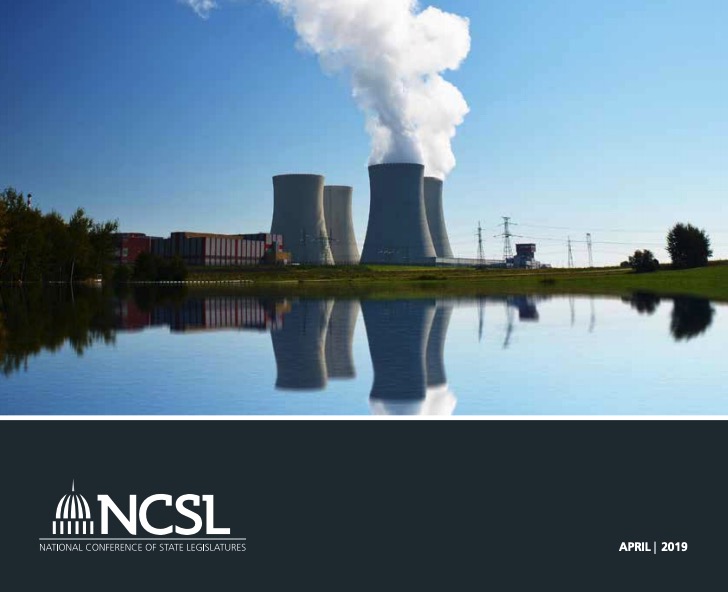 Water and electricity generation are inextricably linked—much of the nation’s power generation is dependent on water to operate while water systems require a stable supply of electricity for treatment and delivery. Since electricity generation accounts for approximately 45 percent of water withdrawals in the U.S., identifying ways to decrease water use while making sure it is available during shortages, can help create a resilient electric grid while freeing up water for other important societal uses. Population shifts, a rapidly changing electricity mix, as well as drought and other risks to freshwater availability, are critical factors affecting state planners and policymakers as they work to ensure water can sustainably meet electricity generation and other needs for decades to come. This document explores these issues and provides state lawmakers, energy officials and other stakeholders with an array of options they can consider when crafting policies to address energy-water nexus issues.
Water and electricity generation are inextricably linked—much of the nation’s power generation is dependent on water to operate while water systems require a stable supply of electricity for treatment and delivery. Since electricity generation accounts for approximately 45 percent of water withdrawals in the U.S., identifying ways to decrease water use while making sure it is available during shortages, can help create a resilient electric grid while freeing up water for other important societal uses. Population shifts, a rapidly changing electricity mix, as well as drought and other risks to freshwater availability, are critical factors affecting state planners and policymakers as they work to ensure water can sustainably meet electricity generation and other needs for decades to come. This document explores these issues and provides state lawmakers, energy officials and other stakeholders with an array of options they can consider when crafting policies to address energy-water nexus issues.
As state policymakers work to ensure that freshwater supplies can meet the needs of a growing population and a changing electric generation mix, more are considering how policies and plans can be coordinated to reflect the interdependent nature of water and energy systems.
The U.S. Constitution, federal and state legislation, judicial decisions and common law allocate authority over water resources between federal, tribal, state and local governments. Water management is primarily a state and local responsibility, and states take a variety of approaches regarding water rights. Although much of the authority for water rights allocation and permitting lies with states, federal laws also influence water management.
While the nexus between water and energy is clear, decision-making in the energy-water nexus landscape is fragmented and complex. The numerous state entities involved in planning the electric grid seldom coordinate their plans with those responsible for water resource planning and development. The many stakeholders, laws and policies involved in energy and water systems make crafting effective approaches challenging. The disjointed nature of energy-water nexus decision-making raises a number of concerns for state policymakers, such as how the process can be better coordinated, streamlined and integrated into state planning processes. This document seeks to help answer these questions.
Water use for electricity generation should be considered in relation to increasing demands for water from other sectors, shifts in population and the increasing threat of drought. As the population grows, water needs for agriculture and other uses are forecast to grow as well. Temperatures are predicted to continue increasing through the end of the century and are likely to intensify the strain on freshwater resources by increasing evaporation, drought risk and air conditioning needs. Rapid population growth in the arid West, combined with extended drought, has highlighted just how important energy-water nexus issues can be.
The concerns vary by region, shifting with water use patterns and the energy resource mix. In the West, agricultural irrigation is the largest water user while in the East, a combination of municipal, industrial and thermoelectric uses account for most withdrawals. Challenges to freshwater availability are increasing in some regions and several states have already confronted constrained water supplies, where drought has led to power plant curtailments or reductions in hydropower electricity production.
While the rapid growth of natural gas, solar photovoltaic and wind generation—driven by state policies as well as economics—is increasing the water efficiency of our generation fleet, water-saving cooling technologies can further decrease the power sector’s water needs.
The focused missions and compartmentalized nature of the state agencies that influence water and energy policy can produce disjointed decision-making, inefficiency and additional compliance costs. Recognizing this, states are investigating ways to integrate water and energy into comprehensive planning processes. In Arizona, the state Department of Water Resources has committed to educate water and wastewater facility owners and operators about energy- and water-saving opportunities. In New Mexico, the comprehensive state energy plan recommended including energy-water nexus issues as part of its Office of State Engineers regional water planning discussions.
Diverse state approaches have led to a range of water-conserving energy policies across the country. Cooling system requirements imposed by a number of states have decreased the volume of water withdrawn. In addition, state renewable portfolio standards, efficiency standards and a variety of federal tax incentives are among the numerous actions that have promoted the growth of water-efficient generation technologies while transforming the U.S. power sector.
This document discusses state actions and presents a variety of options that states may wish to consider when crafting policies that address energy-water nexus issues. These include: incorporating energy-water issues into state planning approaches; promoting water-efficient cooling technologies for electricity generation; exploring alternative water resources; considering electricity generation sources that use little or no water, such as solar, wind and natural gas technologies; and many others. This report is designed to help decision-makers understand the interconnections between energy and water, and explore potential solutions as states plan for their future.
Water Use for Electricity Generation
Since many power plants require large amounts of water to operate, water access is a critical component of electricity generation. As the nation and the economy have grown, so too have power and water needs. Rising energy demand over the past 70 years has made electricity generation one of the largest water users.
Growing energy demands resulted in steady increases in water withdrawals for thermoelectric plants between 1950 and 1980. In more recent decades, energy demand growth has slowed and the amount of water withdrawn for thermoelectric power has actually decreased, in part due to the transition from once through cooling to recirculating cooling technologies since the 1980s.5 In the coming decades, population growth and increased energy demand—along with a changing generation mix, forecasted regional climatic changes, and competing uses for water from agriculture and other sectors—remain the major variables that are likely to affect water availability for electric generation.
According to the U.S. Geological Survey (USGS), in 2010, thermoelectric power accounted for 45 percent of total water withdrawals while irrigation accounted for 38 percent. By 2015, thermoelectric power accounted for just 41 percent of total withdrawals—an average of 133 billion gallons per day. The last time the U.S. withdrew that little water for electricity generation was in 1965.
Figure 2 below illustrates changes in water withdrawals for different sectors. Despite population growth, total public water withdrawal and use are decreasing due to demand management, new plumbing codes, water-efficient appliances, efficiency improvement programs and pricing strategies.
The Changing Generation Mix
The makeup of our electricity supply is shifting rapidly, with strong implications for water use. Even while electricity demand is expected to rise, the current market favors generators that are relatively less water-intensive.
In 2015, thermoelectric power was responsible for withdrawing around 95 billion gallons of freshwater per day.
Although coal power plants, which are typically very water-intensive, provided more than half of the nation’s electricity in 2005, coal’s share of the electric mix dropped to approximately 30 percent in 2017.10 Much of that capacity has been replaced by more water-efficient natural gas power plants, which met 31 percent of U.S. electricity needs in 2017. Figure 4 illustrates how dramatically the nation’s generation mix has shifted in the last few decades, and these trends are expected to continue. Amid these changes, nuclear power and hydropower have remained steady, around 20 percent and 7 percent, respectively. Non-hydro renewable power—such as solar photovoltaics (PV) and wind, which use little or no water— has risen from 4 percent of generation in 2010 to nearly 8 percent in 2017.
Between 2005 and 2010, thermoelectric water withdrawals declined by around 20 percent.12 They declined another 18 percent between 2010 and 2015. On average, 15 gallons of water was used per megawatt-hour (MWh) of electricity generated in 2015, while 19 gallons per MWh was used in 2010.
The USGS, which tracks this data, attributes this reduction largely to the increasing number of power plants that have been built or converted to use more efficient cooling systems, as will be discussed later in this report. This trend has been furthered in recent years with the retirement of many water-intensive coal units, which have been replaced by more water-efficient natural gas combined cycle plants.
State policies that promote certain resources can affect water demand. Since natural gas combined cycle plants generate much of their power with combustion turbines, which require no cooling, they use less water. They withdraw approximately one-third as much water as nuclear or coal plants for each megawatt-hour of electricity generated, while wind and solar PV use little or no water.
In all, six states accounted for two-thirds of the water reductions seen between 2010 and 2015—a combination of policy and market developments. Those states are California, Illinois, North Carolina, Ohio, Pennsylvania and Texas.
Water Intensity of Electric Generation Resources
The water intensity of electric generators depends on several factors, including the type of fuel, the age of the plant and the cooling system design. While other factors affect water intensity—such as the design and operational efficiency, along with ambient air and water temperatures—fuel and cooling systems are the most influential.
Of the widely deployed resources, nuclear and coal plants have the highest average water intensity.16 Biomass power, though less common, can be just as water-intensive. Natural gas combined cycle systems have greater thermal-to-electric efficiencies and generally use anywhere from half (simple cycle plants) to one-third (combined cycle plants) the amount of water that coal and nuclear plants do. Non-thermoelectric technologies, such as solar PV and wind, have water intensities that are near zero. Figure 5 below graphically compares the water intensities of these and other energy resources.
Due to growing concerns about water intensity, along with requirements imposed by the U.S. Environmental Protection Agency (EPA) to limit withdrawal rates, there has been a recent transition to more water-efficient cooling systems. In 2010, there were 763 units with once-through cooling—systems that require the largest withdrawals of water. By 2016, there were only 463 such units, reflecting a retirement of oncethrough cooled units and a shift to less water-intensive generation and cooling technologies. As a result, the volume of water withdrawn declined by more than 10 percent between 2014 and 2016, while the volume of water discharged declined by more than 17 percent.
While a once-through nuclear plant may consume around 300 gallons per MWh, a closed-loop system will consume twice that while also substantially reducing withdrawals. For context, consumption is considered in the hundreds of gallons per MWh while withdrawals are considered in the tens of thousands of gallons per MWh. And while thermoelectric power may have accounted for 41 percent of total water withdrawals, it only accounted for 3 percent of total water consumption in 2015.
Dry cooling technologies have the potential to eliminate water from the cooling process almost entirely and are viewed as a potential solution to further reducing water requirements, particularly helpful for some arid regions.
Download full version (PDF): Addressing the Nexus between Electricity Generation and Water Resources
About the National Conference of State Legislatures (NCSL)
www.ncsl.org
“Since 1975, NCSL has been the champion of state legislatures. We’ve helped states remain strong and independent by giving them the tools, information and resources to craft the best solutions to difficult problems. We’ve work to sharpen the skills of lawmakers and legislative staff in every state. And we do it every day.”
Tags: National Conference of State Legislatures, NCSL, Power Generation, Water Use for Electricity Generation, Water Withdrawal



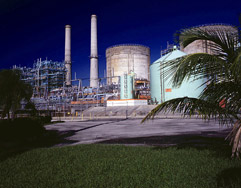
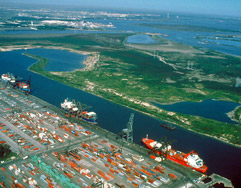
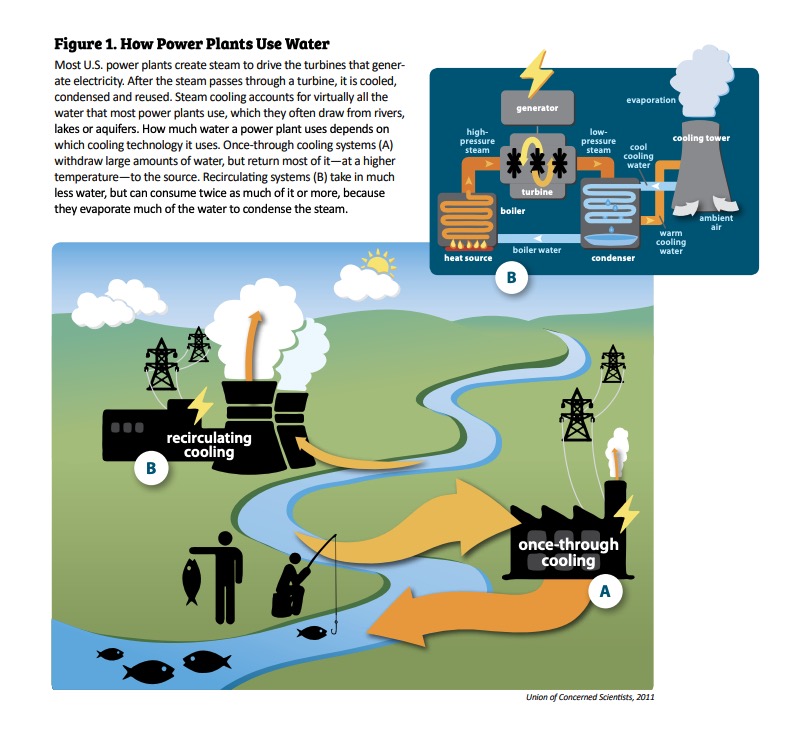
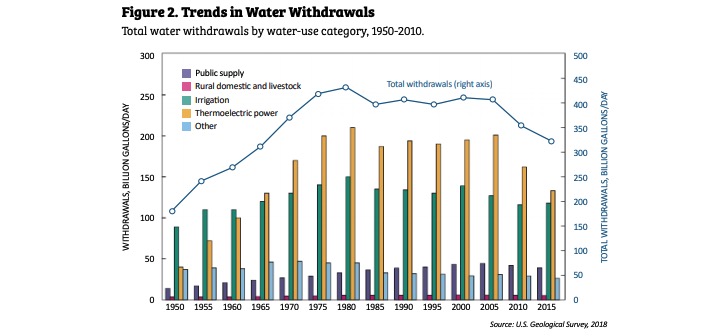

 RSS Feed
RSS Feed